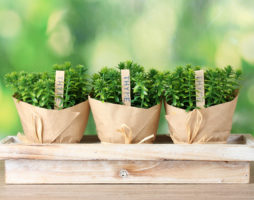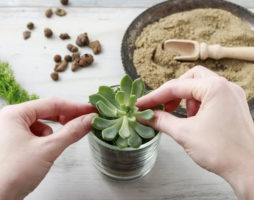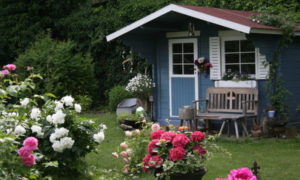Although the arrival of spring is marked by a gradual increase in daylight hours, summer residents and farmers are not happy about this. The newly planted vegetables and berries clearly lack the gentle sun, so you will need to purchase fitolamps for plants and organize seedling illumination.
This idea is not so energy-consuming as requiring attention. And yet it’s worth the trouble, because this is an effective way to support young growth in the most vulnerable period for its development.
What are phytolamps for seedlings?
This agricultural find was literally given to us by heaven, as it is a product of space technology. Phytolamp was developed for growing plants in complete darkness. The task of the lamps is to increase the emission of light in certain color spectra, the streams of which are so lacking for plants in winter.

Phytolamp for seedlings
Today, various types of phytolamps can be found:
- in greenhouses;
- in home greenhouses;
- when illuminating seedlings.
Phytolamp blocks sometimes work in greenhouses all winter. At the same time, they not only illuminate the plants, but also help maintain an optimal microclimate by warming the air. Phytolamps are used for additional illumination of seedlings in spring. Cacti, orchids, grow boxes and aquariums need radiation from these devices.
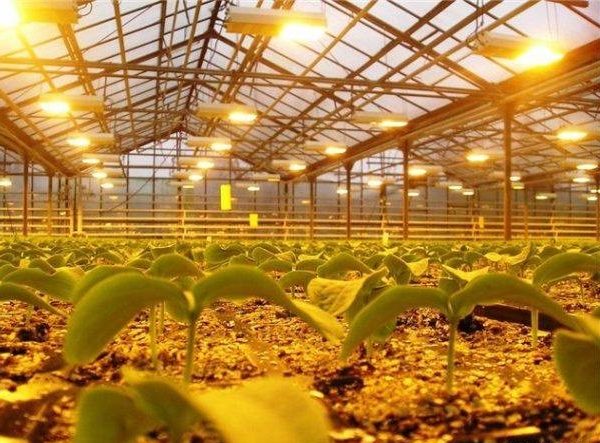
Lamps in the greenhouse maintain an optimal microclimate
Why turn on the backlight in the spring
“Hatched seedlings need to be provided with round-the-clock lighting with appropriate types of phytolamps”
The increase in daylight hours is too slow. During the first spring months, it will become only a couple of hours longer, which is clearly not enough for most plants for adequate growth. In addition, the light pouring from the window is rather dim, as spring days are increasingly overcast. The hatched seedlings generally need to provide round-the-clock lighting with the appropriate types of phytolamps. As it grows, the illumination time will be reduced: at first, to 20 hours, and with the appearance of two or three leaves, to 16 at all. It is important to support the light regime on days of high cloudiness.

Seedlings need to provide round-the-clock lighting
Classification of phytolamps for plants
The industry offers phytolamps in a wide range. The bulk is equipped with a standard base, which makes it possible to build them into table lamps available in every home and simply direct the light fluxes in the right direction.
The life of each lamp is rated at 50,000 hours, regardless of the intensity and spectrum of radiation.
Lamps for illuminating seedlings are divided into three categories:
1. Bicolor lamp. The simplest model that supplies only two light fluxes of blue and red spectrum. This is a universal device that has a beneficial effect on any plants grown on windowsills, including seedlings.It activates photosynthesis, which stimulates plants to rapid growth and active development.
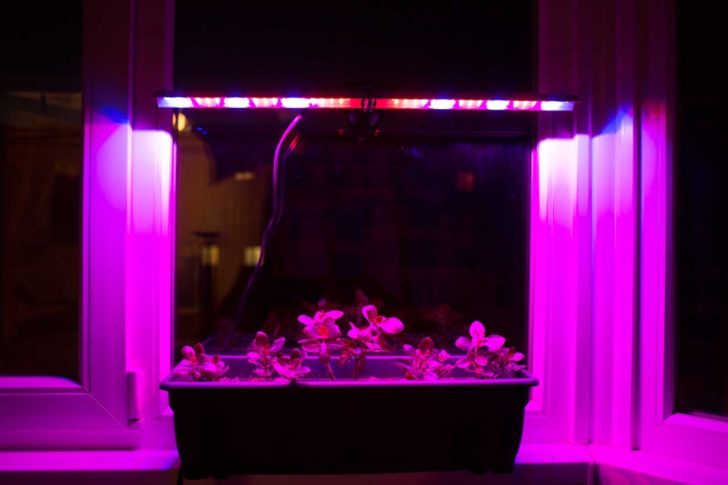
Bicolor Seedling Lamp
2. Multispectral phytolamp for plants. Its light mix of white, red, blue stimulates flowering and increases fruiting. Lamps of this type are used in the illumination of dense plantings and mature plants. With their help, you can achieve high yields of peppers, tomatoes, onions. But they are the least suitable for illuminating seedlings.
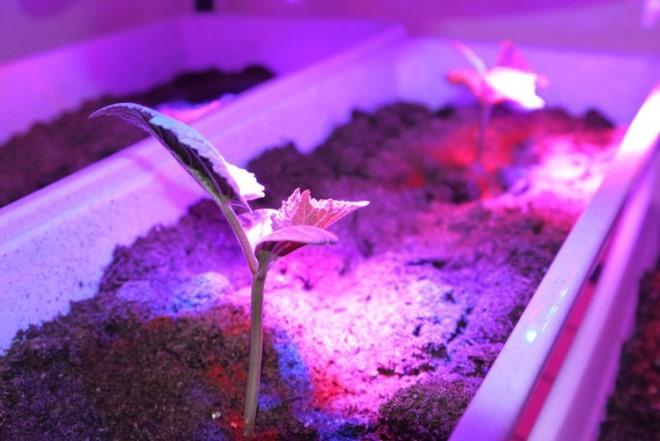
The light of a multispectral lamp
3. Full spectrum lamp. The luminous flux of this type of lamp has collected all the colors of the rainbow. Due to the peak brightness of the blue and red LEDs, the device began to be called a personal sun. Under the light of a full spectrum lamp, you can grow any plant from the seed stage to the fruiting stage, and do it even in a dark pantry or basement. A somewhat aggressive spectral combination in these types of phytolamps is ideal for ripening hot peppers, which do not always gain enough spiciness due to the scarcity of natural sunlight.
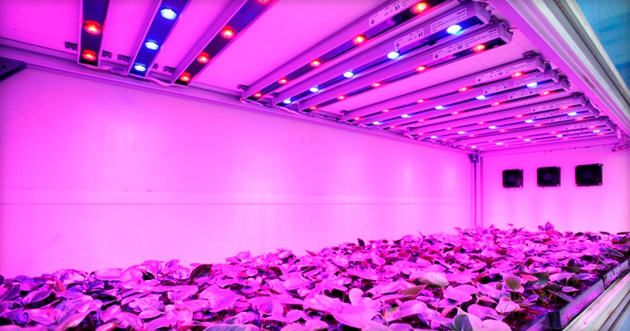
Full spectrum lamp
reference
- lamp ultraviolet also has a bactericidal property;
- infrared radiation is effective in stimulating the growth of the green part;
- orange spectrum accelerates fruit ripening;
- yellow and green colors do not have a significant effect on plant growth, so their absence should not be alarming.
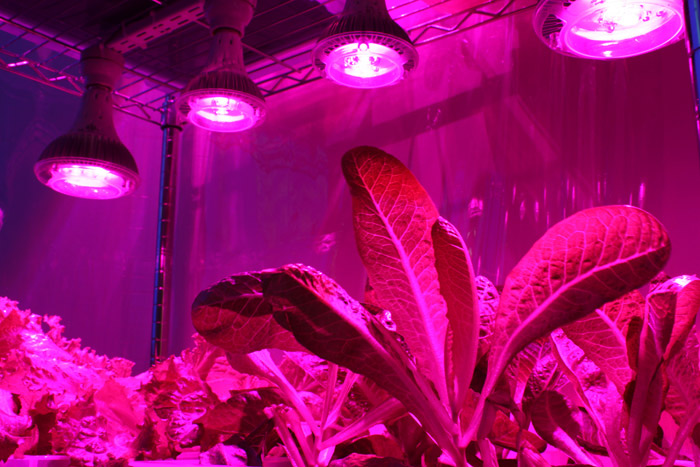
Infrared radiation stimulates plant growth
Types of phytolamps
Fluorescent
Conventional fluorescent lamps were the first to illuminate indoor plants. Today, the release of phytolamps for seedlings of this class has been put on stream. They already have an optimal luminescence spectrum for seedlings, stimulating photosynthesis processes. Their main characteristics are:
- high light output;
- high energy efficiency;
- affordable price.

Luminescent phytolamp for seedlings
Having opted for a fluorescent phytolamp, you need to take into account that it has a low resource (up to 10 thousand hours) and loses its spectral luminous power during operation. Because of this, they are recommended to be used mainly in greenhouses where seedling lamps are needed for a short period, up to 3-4 weeks. Remember that fluorescent phytolamps are harmful to vision and their pinkish-lilac light can provoke headaches. Try not to use them in residential areas, but if you cannot do without it, then fence off the rooms with a reflective screen.
energy saving
A modernized variety of luminescent analogues. They are distinguished by their compact dimensions and higher working possibilities. They are equipped with a choke and a universal lamp base suitable for conventional cartridges.
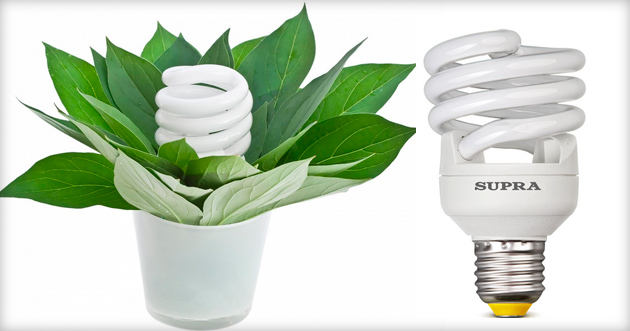
Energy saving lamp
For all its merits, lamps for illuminating plants of this type are not very common among flower growers, because due to the twisting density of the glass tube, they suffer from the effect of self-dimming, that is, reduced light output.
sodium
Phytolamps for plants of the sodium series are characterized by high power and stable luminous flux. The orange-yellow streams emitted by them do not irritate the eyes and are very useful for seedlings. Sodium lamps are approved for use in apartments. To illuminate the garden on the windowsill, one such lamp with a power of up to 100 watts is enough.

Sodium lamps are very useful for seedlings
In adits and naturally unlit greenhouses, complete with sodium lamps, luminescent types of the LBT or LB type are used.
Of the shortcomings of these types of phytolamps, it should be noted the strong incandescence of the luminous parts and the high cost of their ballasts.
induction
These are similar in working principle, but different in design from fluorescent phytolamps.Induction options do not have internal electrodes, which allows them to function for a long time and efficiently. Service life is defined as a minimum of 60,000 hours. If we calculate the daily regime, we get about 20 years.
In addition, phytolamps for plants with induction coils practically do not lose the strength of their glow. They are not afraid of power surges, so the elements will not flicker. The absence of heat makes it possible to place them as close as possible to plants, which significantly increases the intensity of illumination.
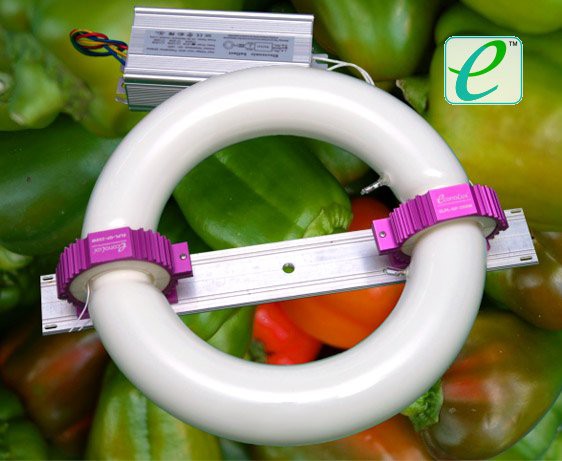
Induction lamps do not lose their luminosity
The color rendition of sodium phytolamps is closest to the solar spectrum, which allows them to be used without additional sources of phytoradiation. The only disadvantage of these lamps for illuminating seedlings is the high cost.
LED
While working on phytolamps, engineers did not leave LEDs aside either. These lamps for plants are endowed with a mass of positive qualities. When consuming a minimum of energy, they give the maximum return, generating powerful radiation. In such phytolamps, it is easy to select the spectral composition. LEDs are endowed with a high operational resource (about 50 thousand hours), as well as stable radiation qualities. The LED module does not get hot, so there is no risk of burning plants. The ability to compactly arrange LEDs in one block with a ballast reduces the cost of production.
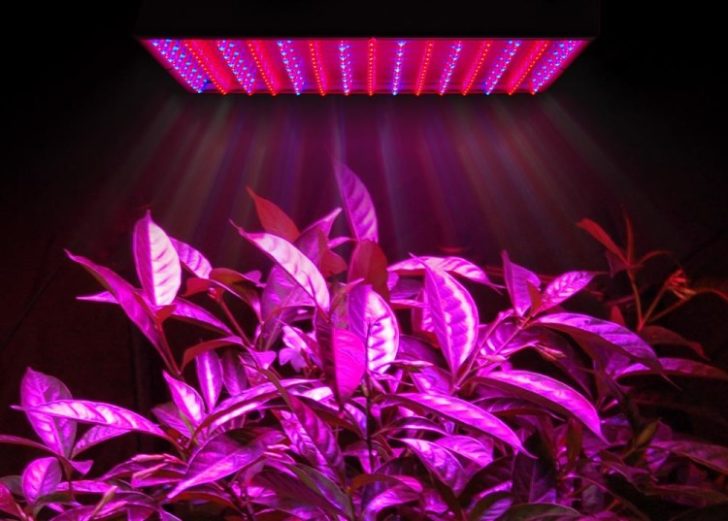
LED phytolamps for seedlings have a high operational resource
What you should know about phytolamps
Lamps for seedlings and home flowers, with all the breadth of their spectrum, are not able to replace full-fledged sunlight, so substitute plants for natural light whenever possible.
The burning color of the phytolamp absolutely does not reflect the real spectral range of radiation. That is, a light bulb burning blue may not generate ultraviolet light, so you should not be guided by this. Human vision is not able to see the spectrum that plants perceive.
If we talk about the popularity of phytolamp models for illuminating seedlings, then farmers choose sodium and LED options for their greenhouses. Fans are quite satisfied with luminescent models, although LED counterparts do not stand aside.
The main characteristics of phytolamps
On the product packaging, you can find a lot of information about the lamp, the lion's share of which is not of particular value. For example, the labeling of an induction phytolamp for plants provides information on:
- about the power
- light stream,
- energy efficiency,
- color temperature,
- stability of the luminous flux,
- color rendition,
- service life.
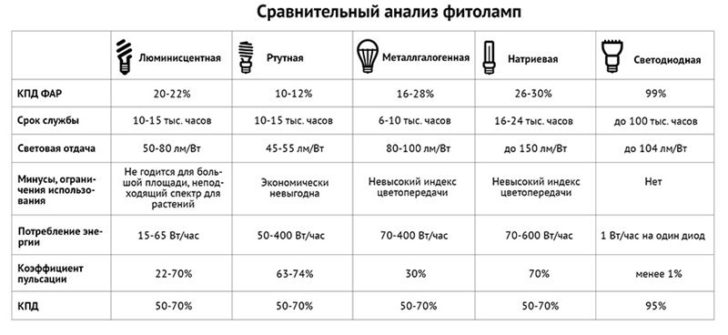
Comparative characteristics of phytolamps for seedlings
Of all the above, only one indicator is required for calculations - the luminous flux, measured in lumens.
Energy efficiency, coupled with power and service life, will give an idea of the economic issues of lamp operation, which will be of interest only to those who need to illuminate seedlings in large areas.
Information about color rendering and color temperature generally does not concern plants, but people, and characterizes the specifics of the perception of radiation by the human eye.
In a rush to finally “break” your head, you can try to understand the spectral nuances of the phytoflow of lamps for seedlings. For this, there is an indicator of PAR (on the package - PAR). The photosynthetic activity of radiation tells about the proportion of radiation that will be optimally absorbed by seedlings.
It is too difficult for people who are not particularly knowledgeable in agronomy to understand all these ups and downs. Experts recommend not to complicate your task, but simply purchase phytolamps for plants from trusted brands.
Is seedling lighting really necessary?
There are skeptics in all matters, and phytolamps are no exception.Some farmers believe that these devices are of no use. They argue that advertising phytolamps is a purely marketing ploy and an attempt to rip off poor summer residents. Similar mixed reviews about the product can be found on the forums. But still, most users confirm that there is still a positive effect from using seedling illumination.
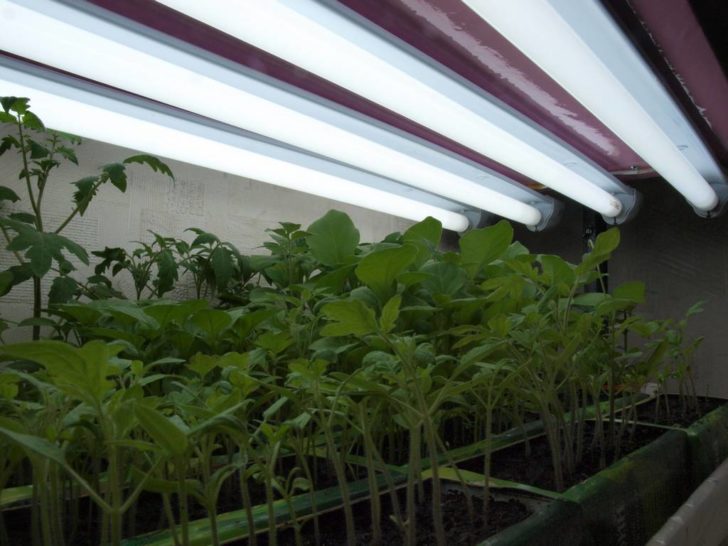
Gardeners note the positive effect of the use of lighting
It is possible to confirm or refute statements only experimentally. To do this, it is enough to take several boxes with seedlings and place them in different conditions, including under a phytolamp. Needless to say, pre-illuminated plants will be much stronger and grow faster. If you want, check it out for yourself.
The second issue raised by the forums is the price of different types of phytolamps. Whether to buy an expensive one or stop at a more affordable option, everyone decides for himself. But, nevertheless, for home use, it is not very rational to purchase phytopanels designed for operation on large plantations. Let's finish with disputes and return to practical issues.
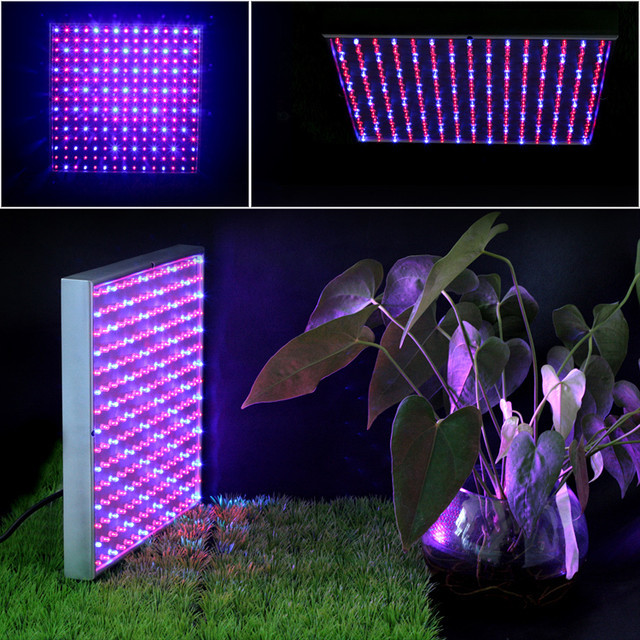
Phytopanels suitable for home use
How to install a phytolamp
The main indicator of fastening a lamp for illuminating seedlings is the direction of the light flux. It should be poured onto the plants from above or from the side. The greatest effect of additional lighting occurs when the lamp is as close as possible to the beds, but here it is necessary to take into account the type of device and the degree of its heating.
With a high last indicator, a burn of the leaves is possible. The minimum lamp can be moved away from the seedlings by 10 cm, the maximum - by 45. The distance is determined by the power of the lamp.
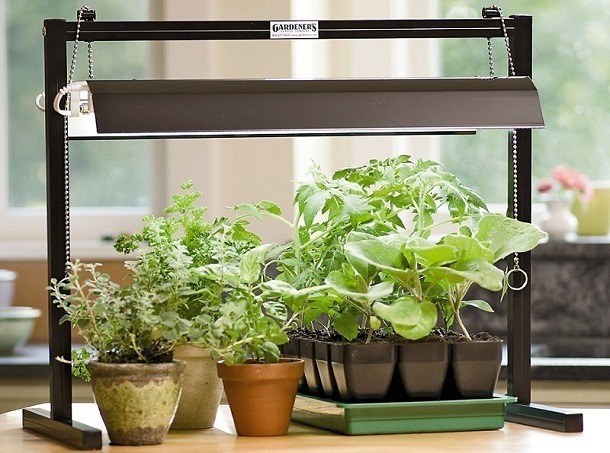
The installation distance of the lamp is determined by its power
The spectrum of light emission should be adjusted as the seedlings grow. At the initial stage, the emphasis is on ultraviolet light, which promotes the development of the root system, but during the set of "green mass", during the periods of flowering and fruit set, the plants will need more orange, pink and red light.
The most popular are the types of phytolamps of the blue-pink combination of spectrum colors, which have a fruitful effect on the harmonious growth of seedlings. Ideally, even give the red rays a privilege, because it is this spectrum that is responsible for photosynthesis. The correct process of the latter will affect the yield.
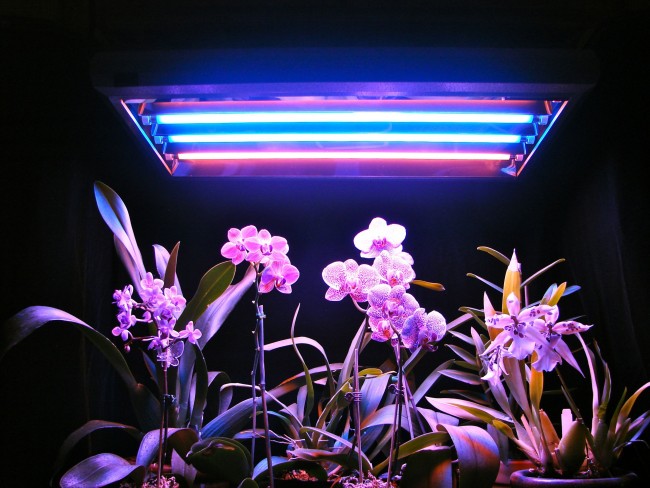
A lamp with blue-pink light has a fruitful effect on the growth of seedlings
How to check the adequacy of the backlight
It is not difficult to figure out whether seedlings are illuminated effectively enough. Look at the stems of the seedlings. If they are thinned and stretch to the source, then the light is clearly not enough for them. Healthy seedlings have straight, strong stems that easily hold leaves that are bright and rich in color.
To determine whether the phytolamp for plants overheats the seedlings, follow the following method: put your hand in the path of the light stream and, if you feel warm, it means that the seedlings are hot. You need to either change the lamp, or move it to a safe distance.
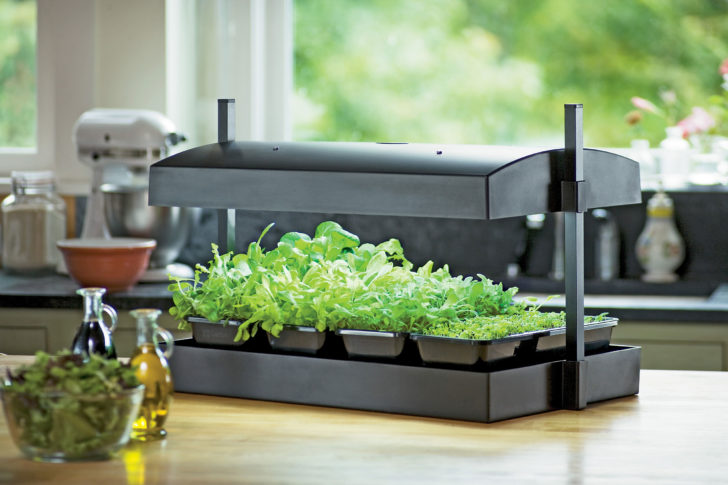
Make sure the lamp is at a safe distance
The next important point in organizing the illumination of seedlings is the determination of the lamp off time. When it's time to turn off the light, the growth itself will tell you. Its leaves will rise up and, as it were, prepare to close. It is impossible to say for sure how long the lamp should burn, since each plant, moreover, each of its varietal varieties will have personal needs. For some, 13 hours of bliss under a lamp for seedlings is enough, and for some, even 17 is not enough.
How to figure out if seedlings need to be illuminated? Again, this is experimental. If you lit the lamp and noticed an increase in illumination, then there is a need for additional light. In the absence of a visible difference, the lamp can be safely extinguished.
back to index ↑Features of lighting greenhouses
For greenhouses, two options for illuminating seedlings are considered optimal:
1. LED lamps.
2. High pressure phytolamps.
For those plants in which a full growth cycle is expected in the greenhouse, high-power LED models (from 50 W) should be installed. It can be both multispectral and bicolor types of phytolamps. The choice depends on the planted culture. For greenery, a two-spectrum lamp is enough. More complex crops will require greens, yellows, oranges.
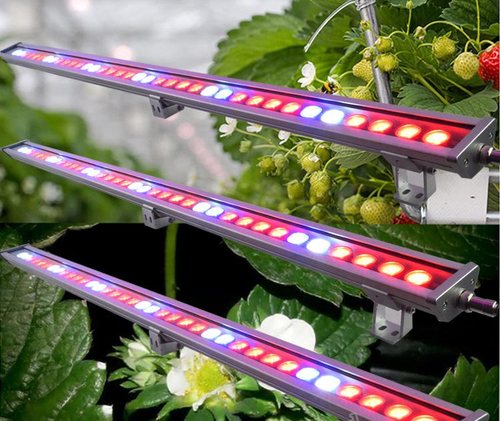
Powerful LED phytolamp model for greenhouses
The number of phytolamps for plants of the multispectral type is calculated based on the power. To illuminate 1 m2 of a greenhouse, a 40 W lamp is needed. In growboxes, the power indicator increases to 150 W / m2.
Unlike ordinary people, it is more profitable for farmers to buy expensive phytolamps and phytopanels. They will be able to quickly compensate for the costs, not only due to the harvest, but also due to the saved electricity.
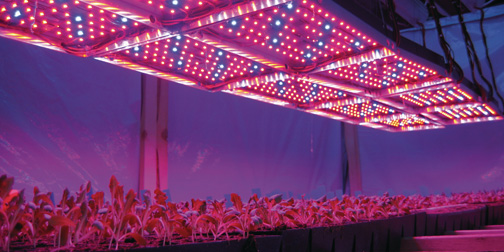
Phytopanels help save energy
Is it possible to assemble a phytolamp yourself?
“Assembling your own LED seedling lamp is a unique chance to try out a personally developed light spectrum, which will allow you to grow plant varieties that are unique to your climate”
What type of lamps for illuminating seedlings can be designed with your own hands? Of course, LED. Working with them is convenient in all respects, including the possibility of arranging light-emitting elements at your own discretion.
For uniform illumination, the device should be made two-line.
When assembling a phytolamp for plants, it should be remembered that each LED emits a light cone in the range of 70-120 °, therefore, they must be placed at such a frequency that they overlap each other's fields.
Self-assembly of an LED seedling lamp is a unique chance to try out a personally developed glow spectrum, which will allow you to grow plant varieties that are unique to your climate. In standard cases, LEDs are combined in the following combinations.
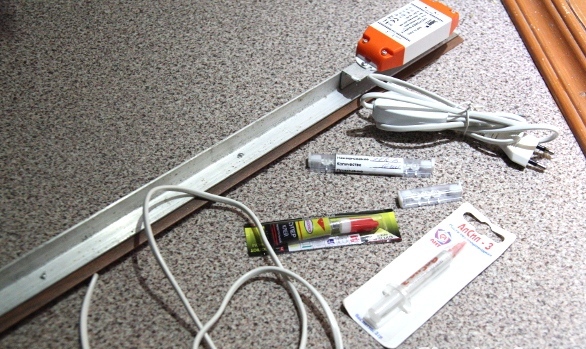
Materials for the manufacture of LED phytolamps
For non-picked seedlings
In phytolamps for illuminating plants in the pre-dip period, the LEDs should alternate in the following sequence: 1 red should have 2 blue ones. Blue, stimulating the growth of roots, stops the development of the stem, which allows it to get stronger and prepare for functional loads. Leaves located on such a stem will be separated from each other at a short distance.
After the pick
At this stage, the intensity of illumination of plants must be reduced. During the dormant period, seedlings can be illuminated with a ribbon with alternating blue and red LEDs 1 through 1.
Assembling a phytolamp for plants
Method I
In order to make phyto-illumination, you will have to go to the store and purchase consumables. You will need:
1. 30 red LEDs.
2. 10 white LEDs.
3. 10 pure whites.
4. 20 blue LEDs.
5. Drivers (current sources).
Why recruit so many white LEDs? The radiation of the first is similar to the brightness of the midday sun, the second - the morning.
It is necessary to draw up a scheme of their regulation in such a way that it is possible to combine their inclusion in various options.
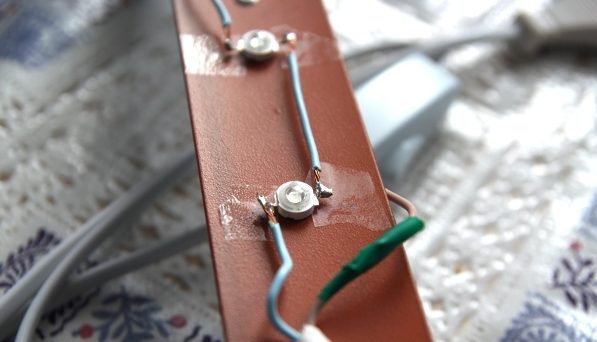
Fixing LED lamps
The body of a homemade lamp for seedlings can be a box from an industrial fluorescent lamp, designed for two light elements.
We will mount the LEDs on the glue directly to the aluminum. It remains to fix the cooling fans and plug the lamp into the outlet.
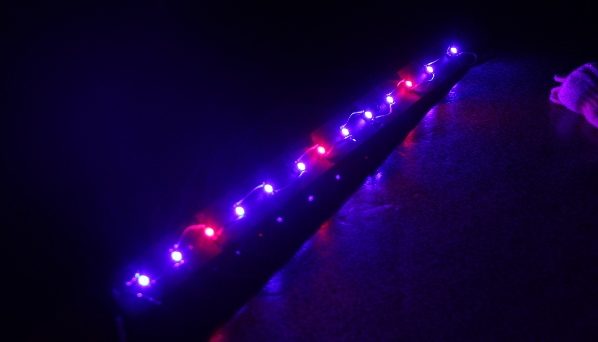
Ready-made LED phytolamp for seedlings
Method II
There is another option for assembling phytolamps for seedlings. Here you will need to stock up on a strip of anodized aluminum, 24 and 12 V power supplies, a computer cooler, blue and red spectrum LED matrices, wires, epoxy and hot glue.
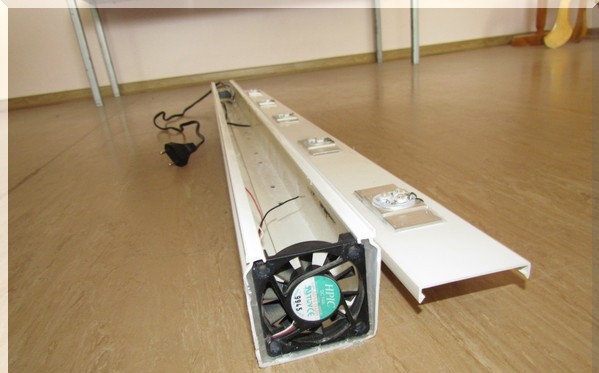
Another option for assembling phytolamps for seedlings
Step 1. We clean the ends of the wires and coat with irradiated.
Step 2 We solder the diode arrays to the prepared ends of the wires. This must be done in such a way that the opposite-pole wiring of the diodes (“+” and “-”) are connected.
Step 3 The remaining free wiring of the LEDs is soldered to the current supply wires and connected to the power supply. It is important to calculate the load of phytolamps for plants. The operating voltage of the LEDs must correspond to the parameters of the power supply unit. If the unit is 24 V, then the LEDs should take the same amount.
Step 4 We make 2 “ears” in a strip of aluminum and attach a cooler to them on a hot-melt glue.
Step 5 We fix a chain of diodes to the aluminum plate. We use epoxy for this.
Step 6 We bend the edges of the aluminum base so that it can reflect light.
Step 7 We turn on the network and check the work.
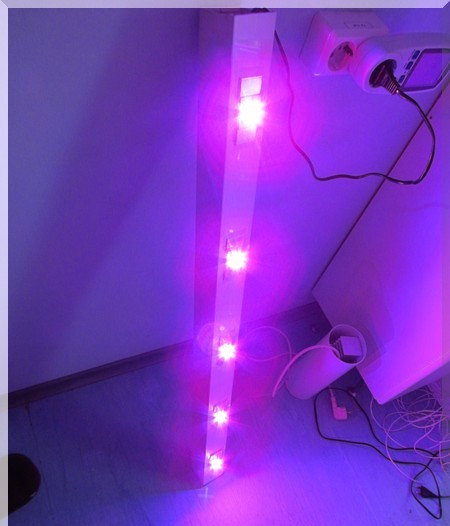
Ready phytolamp for seedlings
Conclusion
Which fitolamps for seedlings you will use - purchased or homemade - is not so important. The main thing is to do it right, then the plants will respond to your care with grateful flowering and fruiting.
Video

